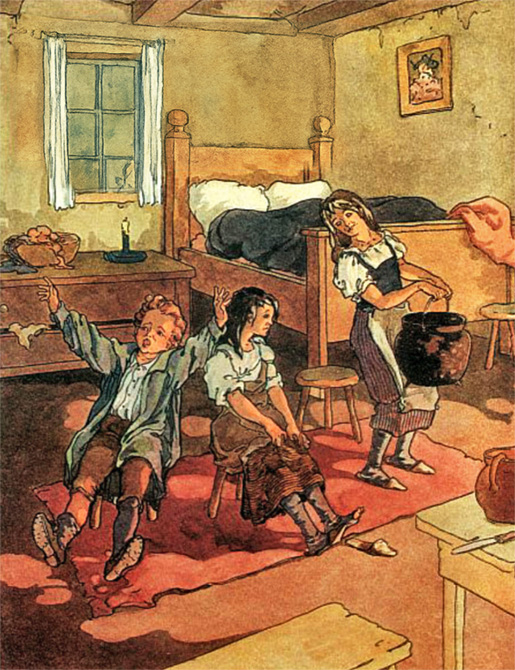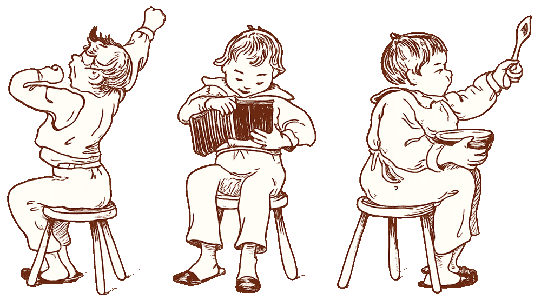To Bed, To Bed (Sleepy-Head)
“To bed, to bed,” says Sleepy-Head;
“Let’s stay awhile,” says Slow;
“Put on the pot,” says Greedy-Sot,
“We’ll sup before we go.”

To Bed, to Bed is one of those rhymes that could have been written last night. It’s bedtime, the kids are circling the usual excuses: one’s yawning and ready to flop, another drags his feet, and the third suddenly decides he needs a snack before he can possibly sleep. Parents two hundred years ago had the same routine — and probably rolled their eyes the same way.
Origins
Nobody knows exactly when people started chanting it, but it was already common enough to be printed in the late 1700s. By the time James Orchard Halliwell stuck it into his Nursery Rhymes of England in the 1840s, it was just part of the furniture.
The funny thing is the “cast of characters.” Sleepy-Head, Slow, and Greedy-Sot don’t sound like heroes from old ballads. They sound like nicknames you’d mutter at the dinner table: “Hurry up, Slow,” or “Alright, Greedy, you’ve had enough.” That’s what makes the rhyme feel so familiar. It’s not about kings or giants, it’s about bedtime in a regular house — the same tug-of-war families still play every single night.
Meaning
On the surface, it’s playful nonsense: one says go to bed, one says wait, one says eat first. But it’s also a little slice of life. Parents then (and now) knew the nightly struggle — tiredness, stalling, and last-minute hunger all showing up at once.
The name Greedy-Sot has a sharper bite. “Sot” usually meant a drunkard, but here it’s just a dig at someone foolishly greedy. The verse teases the child who always wants one more bite before giving in.
So the rhyme works as both a comic sketch and a gentle jab: every child will recognize themselves in at least one of the voices.

Victorian illustrators often drew the three figures as children in nightshirts gathered around a hearth, one rubbing his eyes, one dawdling, one eyeing the supper pot. Sometimes they were pictured more like sprites or comical household spirits.
It often appeared alongside other bedtime rhymes — Wee Willie Winkie, for example — in anthologies meant to mark out the rhythms of a child’s day.